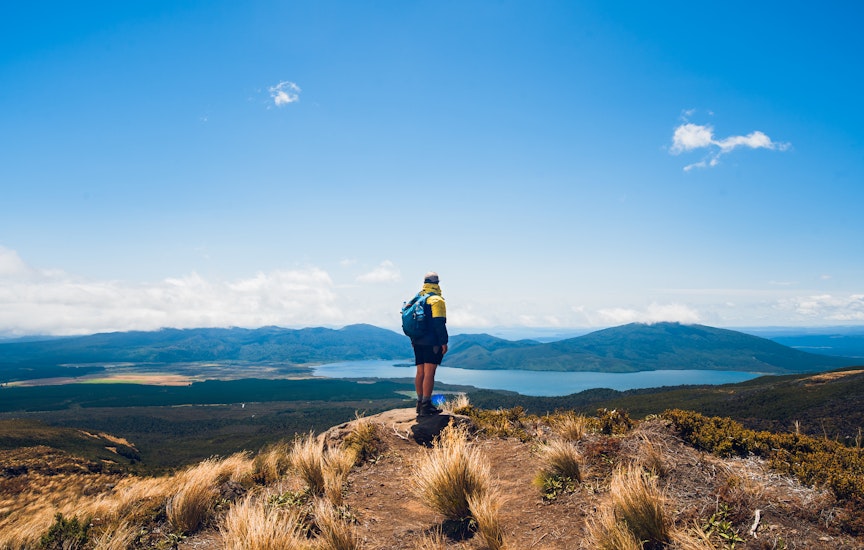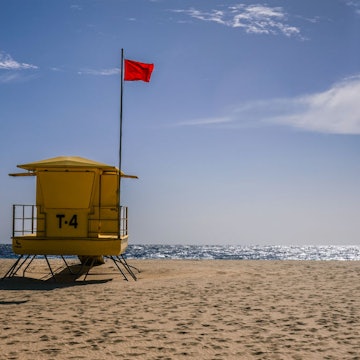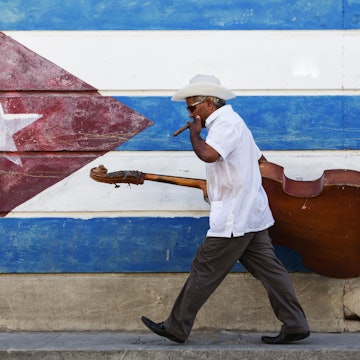
New Zealand’s North Island: on the road at the edge of the world

May 17, 2017 • 9 min read

Lion Rock dominates the bay and beach at the surfers' paradise of Piha. Justin Foulkes / Lonely Planet
The Māori call them mākutu, or witchcraft, because in New Zealand the roads are magical. One minute they surface, unfolding along pastoral foothills; the next they vanish, furrowing deep into Triassic-period jungles laden with silver ferns. It is an untamed corner of the universe that rewards those travelling under their own steam.
With the keys to a campervan, drivers can – on a whim – go in search of a lake glimpsed through the window, or stop to climb a hill spotted in the rear-view mirror – because their bed for the night is never somewhere distantly ahead, but always about two feet behind them.
Catch the wild waves at Piha
Setting out on the highway from Auckland to the west coast town of Piha, the Kiwi enchantment begins to take hold. Anyone driving to the surfer’s retreat must first negotiate the Waitakere Ranges, an abrupt vegetative Eden of subtropical kauri forest that acts as a barrier between the twinkling lights of civilisation and the untamed coast.
After a 30-minute drive west, the road corkscrews into hills carpeted with nīkau palms, some as giant as pantomime beanstalks, then careers down the other side to meet Piha’s sheer cliffs, pock-marked with nesting sites for gulls. It’s mid-afternoon when the campervan trundles into Piha, passing scattered weatherboard houses and parking in front of a beach being pounded by waves. This volcanic sand has Marvel-superhero strength, so rich in iron it will stick to a magnet.
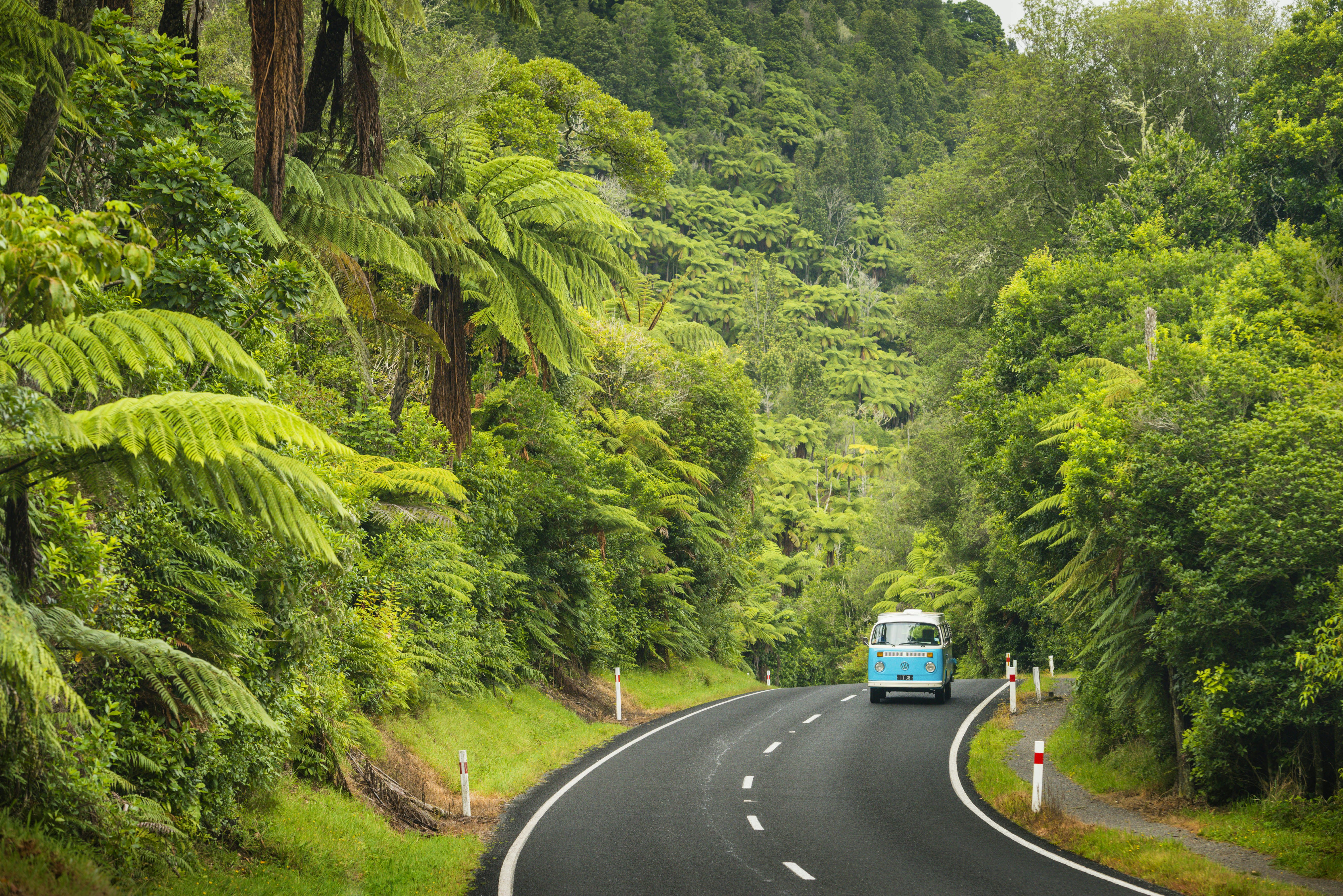
New Zealand’s surfers are also drawn here, and talk about it in poetic terms matched only by the place’s name itself – Piha is the Māori word for the onomatopoeic crack of surf sliced by the bow of a canoe. The town is so laid-back and low-key that if the surf club were to shut, it’d surely disappear off the map completely. Following a different clock to the rest of New Zealand, surfers rise with the tides and the streets empty at sunset.
With his sun-bleached mop of tousled hair, national longboard champion Zen Wallis embodies Piha’s surfing ideal. He’s out on the water most days, catching break after break as they blow in off the Tasman Sea, before darkness finally sends him ashore. (He even admits to sleeping with his board before a competition, for luck.)
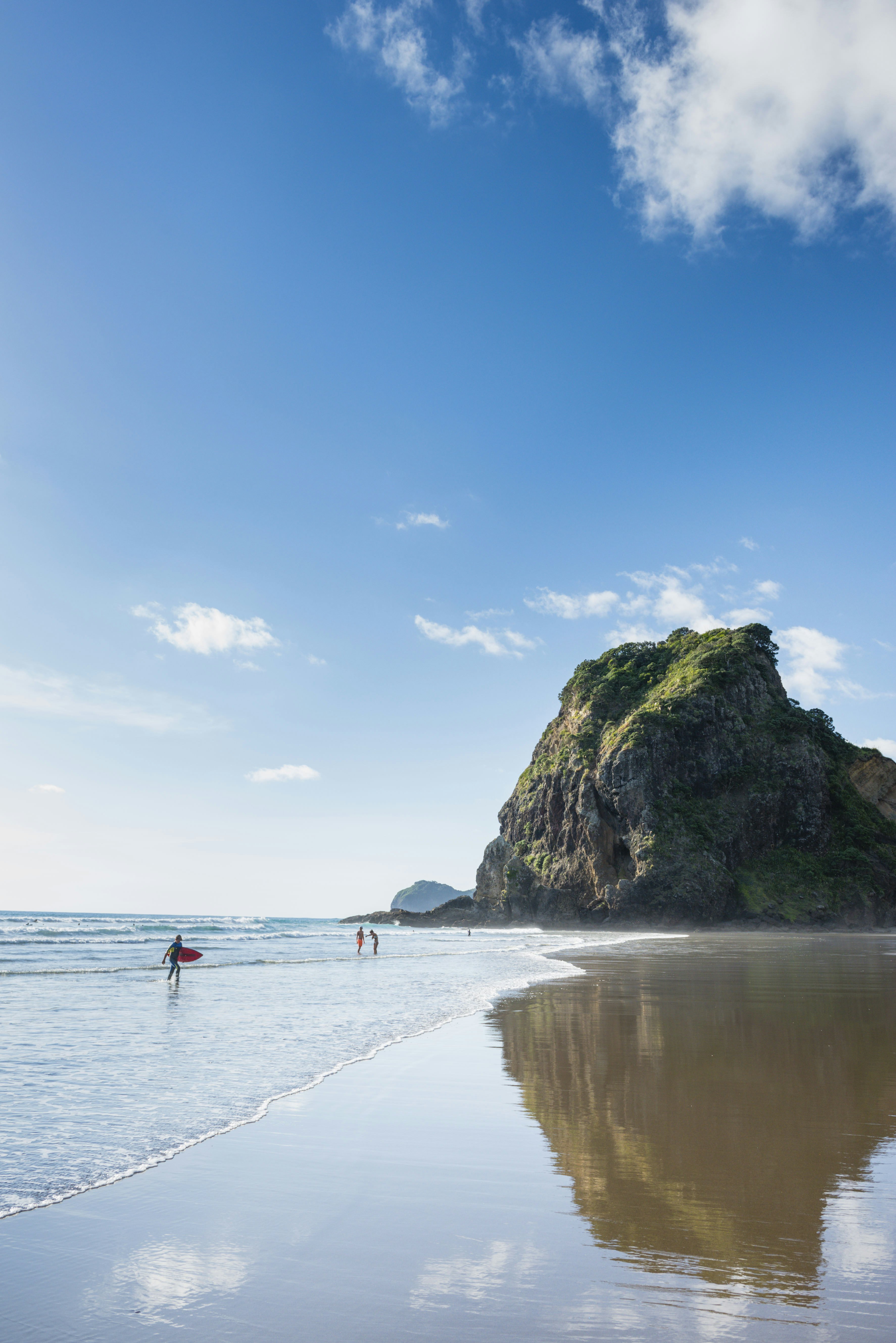
Also a surf coach, Zen has a deep knowledge of Piha and talks about its waves in reverential metaphors. The predominant onshore wind, he explains, creates a potent hit, attracting only hardened surf-addicts to the town. ‘Life existed in black and white before the sport arrived here,’ he says, the sky turning oily purple behind him. ‘Now we wake everyday to a kaleidoscopic, world-class wave, but without the crowds. It’s like a drug.’
See glowworms at Waitomo Caves
The campervan rolls south out of Piha in the haze of early morning. Grey banks of cloud shift across the glossy hills and fields where gangly sheep farmers round up super-sized flocks numbering more than a thousand.
Neither the livestock nor the terrain at the western edge of the North Island would look out of place in the Welsh valleys. Evergreen vales and dimpled pastures surround the one-street town of Waitomo, while, beyond the roadside, rumpled farmlands and wool sheds are a picture of serenity. Flocks doze on mossy crags as local farmers watch a rugby game in town. Calm, peaceful and seemingly unremarkable, this place gives nothing away of the preternatural treasures hidden below the topsoil.

Even in a country as geographically blessed as New Zealand, the Waitomo Caves command a special status. A network of fathomless, pitch-black passages, they are places long sacred to the Māori, but also to speleologists like Angus Stubbs, a third-generation farmer-turned-caver. For the past 20 years, this modern-day caveman has found sanctuary in their honeycombed caverns and sunken potholes. They are the North Island’s cathedrals, he says, created by millennia of water erosion and now home to a subterranean river and labyrinthine tunnels.
The local Kawhia tribe used the area’s limestone catacombs as burial sites to access the afterlife, but the Victorians were more interested in what they could take away. They plundered the caves one by one, digging up museum-piece curiosities and the skeletons of giant moa birds. A flightless creature hunted to extinction by the Māori, its bones fetched a fine price at auction back in London.
Angus leads the way down into the Ruakuri Cave, the midday sun vanishing behind the snap of a trapdoor. Squeezing through narrow gaps into a cavernous obsidian-black hangar, our eyes adjust to the darkness. And then they appear: thousands of underground stars lighting up the vaulted gallery like a lattice of subterranean sky.

‘These little fellas are just like me,’ says Angus, shining a torch on the glowworms, known first to the Māori as ‘titiwai’ – water stars. ‘Not pretty when the lights are on, but beautiful when it’s dark.’
Chill out at Lake Taupo
To drive the North Island is to encounter signposts that tell the story of New Zealand, a curious mix of towns named by homesick Scots and Englishmen – Hamilton, Hastings, Cambridge, New Plymouth – and sing-song Māori villages: Matamata, Whatawhata, Mangatangi.
From Waitomo Caves, the road to Lake Taupo turns southeast onto State Highway 30. It rolls over concertina-creased hills and livestock grids into the North Island’s agricultural heartland, dewy and green with vegetation. Soon overtaken by volcanic ridges and treeless mountaintops, the road emerges at Lake Taupo, one of the grandest waterbodies in the southern hemisphere.

Filling the caldera of a prehistoric volcano, the lake was created by one of the largest eruptions in history – one that blew out so much detritus that it would have made Krakatoa look trifling. When Taupo first appears over the dashboard, it looks more sea than lake. It’s a body so big that the water and sky mix like a watercolour; one so wide that the Earth curves across its surface like a spoon.
Outside Taupo, on the town’s northern outskirts, is the workshop of Delani Brown, a master carver who crafts allegorical totems inspired by the lake and by the Māori creation myth of Ranginui, the sky father, and Papatūānuku, the earth mother.

‘The wood can take me in any direction,’ he says, tightening a lumpen block of petrified swamp kauri in a vice. ‘So I have to listen to it carefully.’ As the afternoon passes, the slab gradually undergoes a metamorphosis into an intricate talisman. Delani uses his chisel like a fine paintbrush, delicately etching marks and paring back the block one shave at a time. Up close, it has whittled tattoo lines across its brow; each groove simulates the area’s synergy of rivers, canyons and fault-lines.
Proud of his accomplishment, Delani looks out towards Lake Taupo. ‘Ko wai koe?’ he asks me. ‘Which waters do you come from?’ It is a traditional greeting born from whakapapa, the fundamental principle of genealogy that permeates all Māori culture. He hesitates for a moment before pointing to the lake. ‘That’s my universe,’ he says. ‘Right there.’
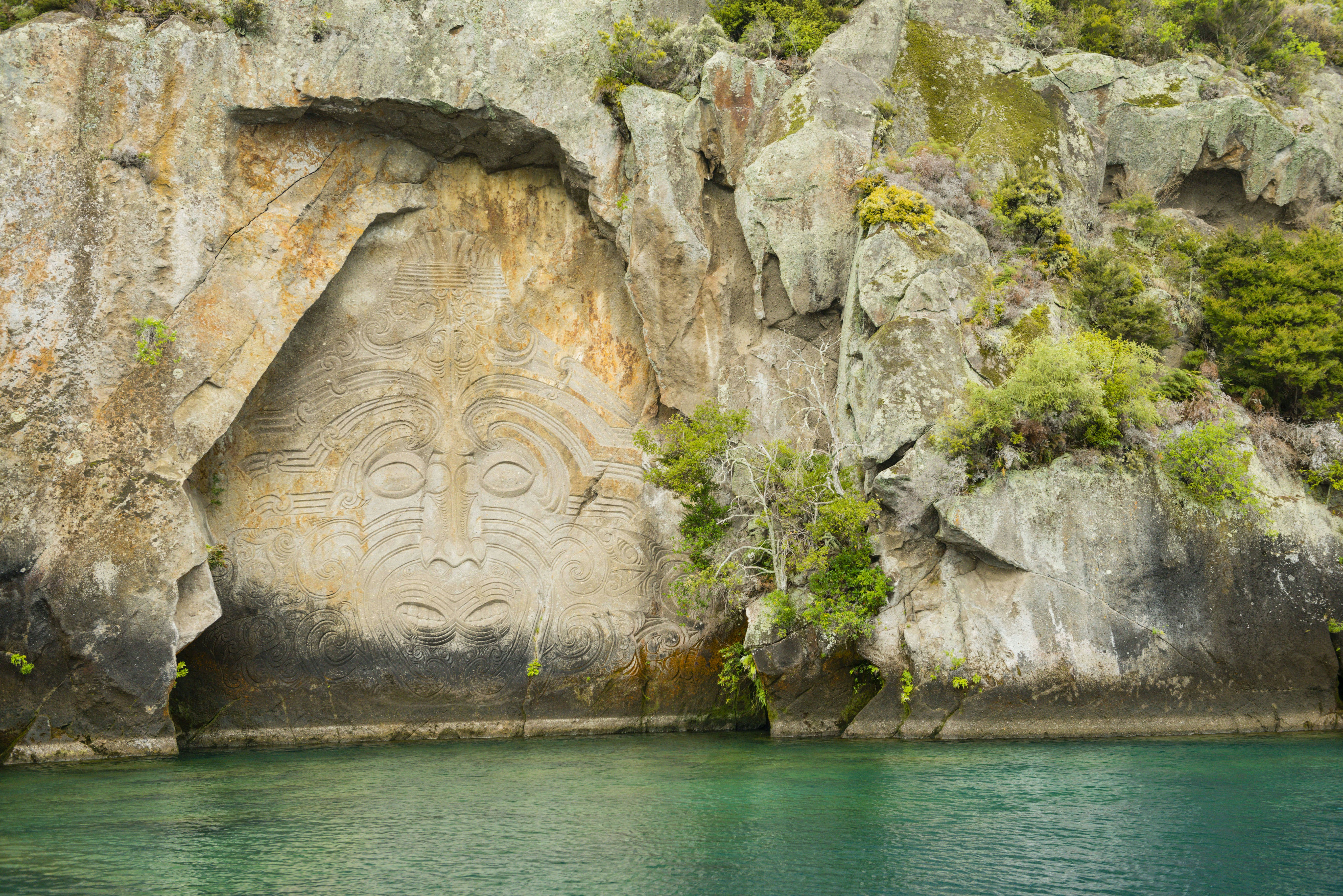
It’s not just Māori like Delani who have been bewitched by the Great Lake Taupo region. Ever since the first tribes arrived in the 13th century by canoe, the low-slung villages dotted along the lake have attracted newcomers. These days, the acacia-banked edges are filled with the guesthouses, galleries, organic wineries and craft breweries that keep holidaymakers here for days. Many will make the trip out by boat to the high bluffs at Mine Bay, to bob in front of a magnificent stone-faced god carved into the cliffside.
Before dark, the campervan is back on the road and the next 30 miles zip by with the tempo of a radio pop song. We veer south to the lakeshore town of Turangi, parking by the waterside and lighting a brazier under a half-moon sky. Dinner is lamb chops cooked on the barbecue, washed down with cool-box beers.
Explore the steaming wonders of Rotorua
Come daybreak, the road squiggles north before reaching the spa town of Rotorua. Hunkered among silvery crater lakes of all shapes and sizes, the town is renowned for its sulphur-rich bathing waters and its fantastical Māori legends.

Rotorua’s most memorable folk tales are told by 71-year-old Auntie Josie Scott, a Māori elder within the Ngāti Whakaue tribe. Storytelling is a big part of life in Rotorua, she explains, and few tell them better than her. She leads cultural walking tours around the historic settlement of Ohinemutu on the outskirts of Rotorua – by her reckoning, the most energised place on Earth.
‘There’s a magnetic strength that makes it impossible to leave,’ she says, a geyser behind her letting off steam. ‘The ground is alive, and that binds us here.’ Strolling around the Māori village, past the cherry-red and white St Faith’s Anglican Church, she points to outdoor bathing sheds and a thermal pool at the end of a neighbour’s garden. ‘It’s 300 degrees in there,’ she says. ‘That heat is the lifeline that brought our tribe in the first place. Just don’t get too close; you don’t want to get any thermal activity on your buns.’

Rotorua has a complicated relationship with its waters – life here is not without its hazards. There are more than 1,200 hissing geothermal features in the area, and 500 pools and 65 geysers in the Whakarewarewa Valley alone. Hot springs can burst higher than a six-storey building. Nevertheless, locals appreciate the tourism revenue they generate – there are daily crowds at meringue-shaped Lady Knox Geyser at Wai-O-Tapu, where plumes of froth surge skywards and steam vents from the ground, billowing across the hillside and blowing with an end-of-the-world fury.
Elsewhere in Wai-O-Tapu, the geysers – the wildest in the southern hemisphere – seem to dance and sing. Some squeak out bubbles, others blow cotton-candy puffs into the permanently sour-smelling air. There are lime-green cauldrons (whiffy eggs), scalloped-edge mud pools (week-old ham) and smoking caves (a gone-off bean fritter). In particular, the Champagne Pool makes unearthly gurgles, fizzing like the effervescent painkillers you might need after a night out on the good stuff.
The next day, the landscape turns from steamy to sun-kissed on the highway back to Auckland. For two hours the road rolls past forests, pastoral scenes and winding waterways. As the city at last rears into view and buildings close in around the campervan, attempting a last-minute U-turn feels like just the right thing to do.
This article appeared in the May 2017 edition of Lonely Planet Traveller magazine. Mike MacEacheran travelled to New Zealand with support from New Zealand Tourism Board (newzealand.com). Lonely Planet contributors do not accept freebies in exchange for positive coverage.
http://shop.lonelyplanet.com/new-zealand/new-zealands-best-trips-1/





